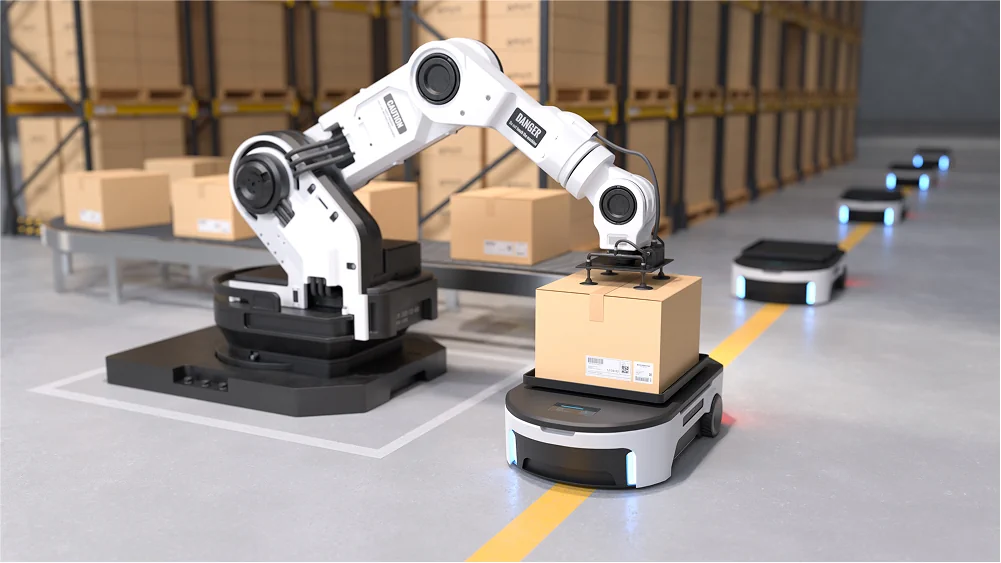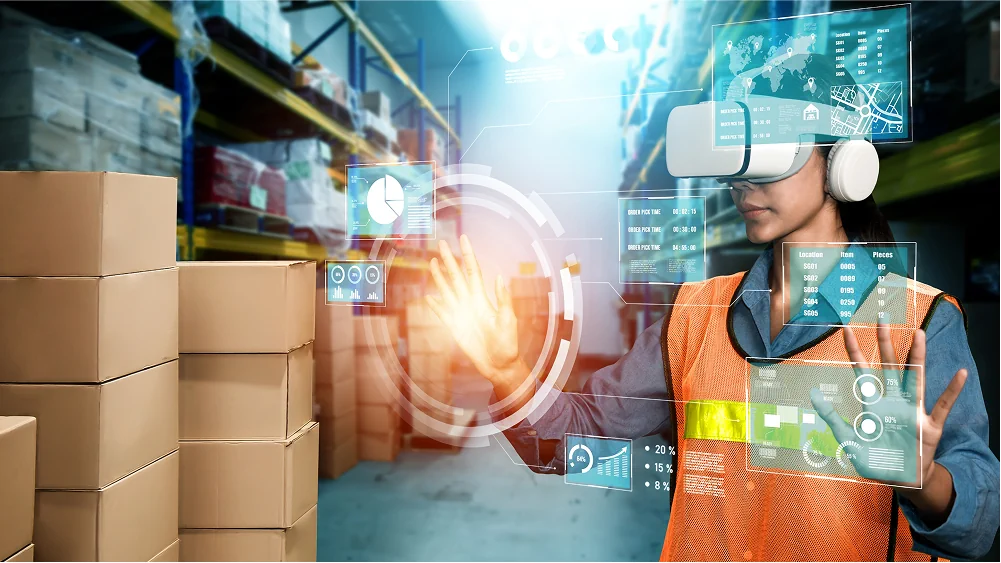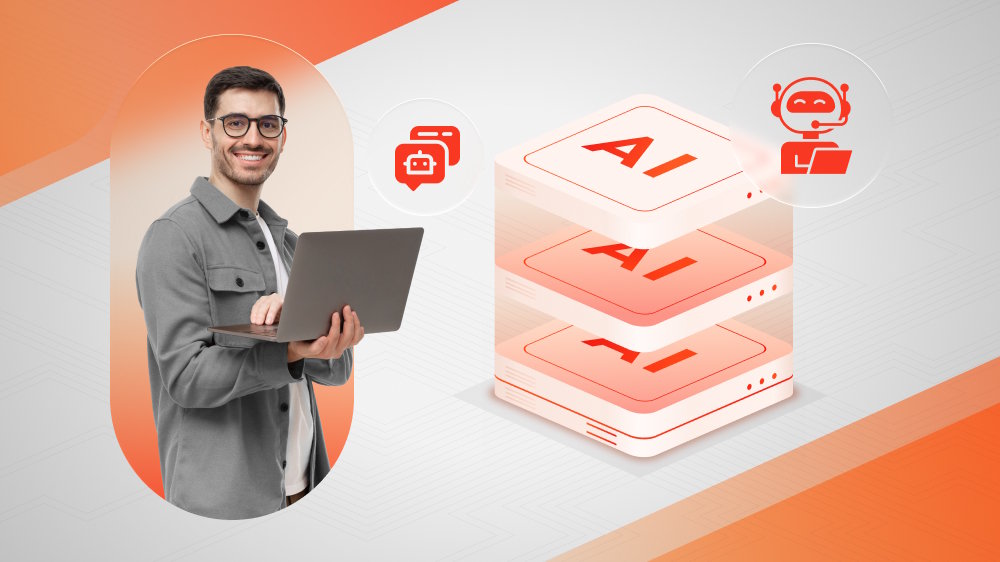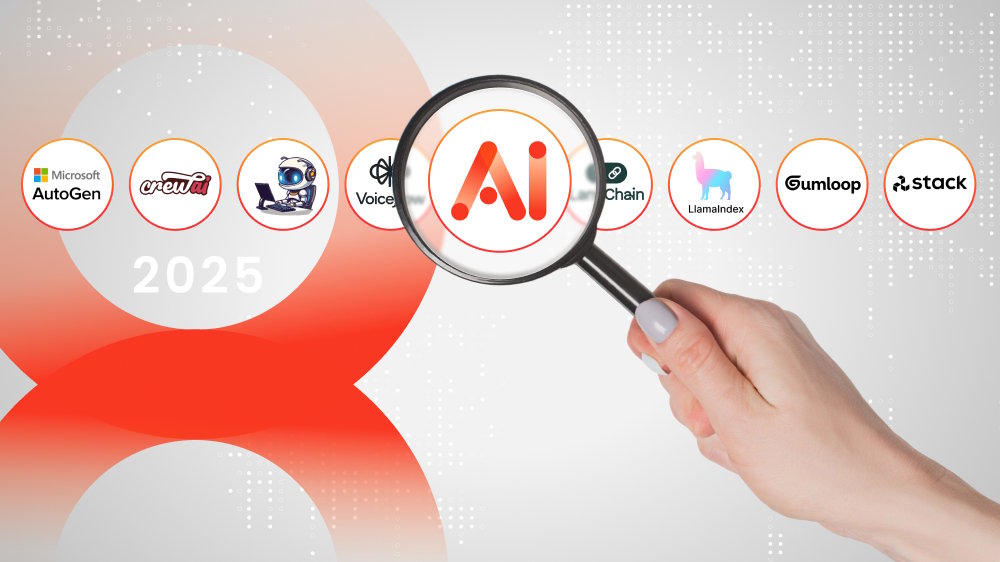
Top Advanced Ways to Apply AI in Inventory Management in 2025
AI use cases in supply chains go beyond demand forecasting, inventory optimization, and process automation. Rather, they encompass more innovative approaches. Explore now some of the innovative ways to apply AI in your inventory management.

Content Map
More chaptersWe are living in the era of AI (artificial intelligence). Browsing forums or social networks, it’s common to find analysis articles on this transformative technology and its societal impact. However, have you ever heard of “AI inventory management”?
According to The Economist, AI can add up to $1.3 trillion to the global economy in the next twenty years if used in supply chains and logistics. Everything happens for a reason. Compared to not applying new technology, integrating AI into processes clearly brings more advantages to businesses.
If you still don’t know where to start, or how to apply AI in inventory management, the article below will give you valuable insights.
Inventory Management Systems: With AI vs. Without AI
The resistance to change makes us wary of new things. For some individuals and organizations who have never (thought of) integrating AI into inventory management processes, it is understandable when they doubt the effectiveness of this modern technology. Will AI disrupt my smooth operations? Why should I apply AI when everything is still on track? What are the real benefits of AI in inventory management?
In fact, there are many well-known companies that have successfully implemented AI in their inventory management to optimize operational efficiency, reduce costs, and improve accuracy. Walmart, Zara, Amazon, McDonald’s, Coca-Cola are just a few of the names across industries that serve as real-world use cases, motivating and inspiring various business owners and individuals to use artificial intelligence for inventory optimization.
However, to help you better visualize AI capabilities in bringing a breath of fresh air to warehouse management, we need to take a closer look at the overall picture of the logistics market before and after AI.
| Aspect | With AI | Without AI |
|---|---|---|
| Demand Forecasting | Predicts demand accurately using real-time data (sales, seasonality, trends, weather). | Relies on historical averages or human estimates with less accuracy. |
| Replenishment & Restocking | Automatically triggers orders based on predictive models. | Manual or rule-based, prone to delay or overstocking. |
| Inventory Visibility | Real-time, centralized tracking across warehouses and channels. | Disconnected systems, possible blind spots. |
| Stockout & Overstock Prevention | Predicts and prevents shortages or excess via simulations and forecasts. | Reactive response after problems occur. |
| Safety Stock Management | Dynamically adjusts based on supply chain variables. | Fixed formulas, can’t adapt to sudden changes. |
| Supplier Lead Time Prediction | Learns from patterns to forecast actual delivery times. | Based on static estimates or vendor promises. |
| Returns Handling | Analyzes return patterns and optimizes reverse logistics. | Manual restocking, poor insight into root causes. |
| Warehouse Operations | Integrates with robots and AI for smart picking, packing, and sorting. | Manual or barcode-only handling, resulting in slower processes. |
| Scalability | Scales efficiently across locations, SKUs, and channels. | Requires significant manpower to scale. |
| Decision Making | AI dashboards suggest actionable insights in real time. | Depends on reports and human interpretation. |
| Cost Efficiency | Reduces holding costs, improves order cycles, cuts waste. | Higher costs from overstocking, emergency orders, and waste. |
| Responsiveness to Change | Adapts to market shifts, promotions, and global events dynamically. | Delayed response, often after damage is done. |
As you can see, AI doesn’t just improve inventory management. Rather, it transforms the whole industry. It is undeniable that traditional methods still work in simple settings, but AI application is a crucial factor for business growth, offering strong competitive advantages and real-time adaptability.
17 Applications of AI in Inventory Management
It is easy to talk about pure theory. The difficult part is how to translate it into practical exercises that are highly relevant to daily life. For those who are new to AI, this must be a big challenge. If your company is a startup which are new to AI applications, you can start with some of the following common use cases:
- AI for Smart Demand Forecasting: AI can analyze historical sales data, market trends, weather, promotions, and seasonality to predict future demand patterns.
- AI for Automated Stock Replenishment: AI tracks inventory data in real time, automatically triggering restocking when thresholds are reached, optimizing inventory turnover and shelf availability.
- AI for Inventory Optimization: AI can optimize inventory levels and minimize holding costs by balancing inventory across multiple warehouses or stores.
- AI for Stockout and Overstock Prevention: By letting AI assess seasonal shifts in customer demand, you can predict potential stockouts and overstocks before they happen.
- AI for Lead Time Prediction: AI inventory management software can predict actual delivery lead times due to previous delivery trends and global shipping updates.
- AI for Returns and Reverse Logistics Management: AI improves restocking decisions and predicts a product’s return rates by analyzing its return trends.
- AI-Powered Robotics in Warehousing: With AI and IoT, you gain real-time visibility into stock movement, shelf life, and storage conditions, reducing waste and shrinkage.
- AI for Smart Pricing and Discounting: AI recommends price changes to respond to demand trends in real time due to supply and demand parameters on the market.
- AI Chatbots for Inventory Queries: Warehouse staff or store managers can ask an AI chatbot about everything from inventory status to reorder levels for quick catching up.
The above applications are great entry points to start your AI integration journey, but they only scratch the surface of what AI can offer and are suitable for newcomers only. Instead, the real potential of AI in inventory management lies far beyond predictive analytics and automation. Let’s explore some of the most innovative use cases where modern AI is pushing boundaries.

10. Self-Healing Supply Chains
AI is popular for automating repetitive operations. However, did you know that this modern technology has evolved to the state of autonomous inventory control, which almost completely eliminates human intervention?
By continuously updating data on inventory, suppliers, routes, demand, and production in real time, AI tools are able to immediately recognize unusual changes in daily processes. Disruptions such as shutdowns or a port strike, if not resolved promptly, can severely disrupt the whole working flow. Instead of waiting for human commands, self-healing supply chains perform a series of tasks including triggering real-time reorders from alternate suppliers, adjusting inventory thresholds based on lead-time changes, and optimizing fulfillment routes instantly, ensuring everything stays under control without even needing support from experts.
11. Generative AI for Inventory Network Design
Warehouse networks include many components from placement rules, reorder policies to regional strategies and more which require human consultants or engineers to design. Building a complete system is a very time-consuming journey. However, with the help of AI, such a process is shortened in both time and effort.
Generative AI now can create thousands of simulated inventory layouts or stocking policies, then recommend to humans the most efficient ones. Based on historical data such as sales, logistics, and customer satisfaction data, etc., this technology is also capable of generating what-if scenarios for peak seasons or expansion even though they have not yet occurred.
12. AI + Blockchain for Inventory Authenticity & Traceability
While AI and blockchain are transformative on their own, together, they are a powerful pair that enables smarter, more secure, and more autonomous systems. So, what actually happens when these two cutting-edge technologies combine?
In fields like inventory management, AI plays a vital role in making smart decisions based on data. Blockchain, on the other hand, makes them accountable. The combination of AI and blockchain for inventory authenticity and traceability is a great example to follow up. This application is commonly used in items where quality and origin are critical, pharma or luxury goods, for examples.
To ensure product regulatory traceability and authentication, AI first automates inventory tracking to collect all the data surrounding the product. Blockchain then records this information and events in blocks that cannot be changed or deleted. With just a scan, buyers, regulators, and partners can easily verify the authenticity of a good instead of simply taking the word of suppliers. This process solves the main problem of trust when the data speaks for itself.
13. Edge AI for On-the-Fly Inventory Decisions
With edge AI, smart devices like scanners or delivery trucks can make local inventory decisions even without the internet. DHL, a global and multinational logistics company that provides courier, package delivery, and express mail services, is a real-world use case for this AI application.
By using edge AI at smart warehouses, DHL automates the adjustment of pick-up routes to the most convenient without causing congestion. Meanwhile, smart shelves equipped in delivery boards help drivers know what to restock on the fly. All without relying on human intervention.
14. Carbon-Aware Inventory Decisions
Have you ever heard of ESG goals - a company’s objectives related to Environmental, Social, and Governance performance? In the logistics industry and such, ESG goals are not only a goal to demonstrate the responsibility of the business to the environment beyond just financial profit, but also an important criterion to attract potential customers who appreciate “green” value.
AI models in addition to weighing inventory routes and storage plans by cost and speed also have the ability to calculate CO₂ emissions and suggest greener suppliers or closer distribution centers accordingly to help businesses better align with ESG goals while still hitting delivery KPIs.
15. Inventory-as-a-Service with Predictive Auto-Fulfillment
This is a modern AI-driven service model where vendors automatically provide services to manage and replenish your inventory before you even realize you need more stock. Instead of manually checking every shelf and placing an order, the AI tool does all of that for you, freeing up significant time and effort to focus on other core competencies.
It’s no coincidence that AI does this. AI uses your database of purchase history, stock levels, or machine usage to predict the next state of the inventory, placing an order on your behalf and without any action needed from you.
16. Unified AI for Cross-Functional Optimization
No more data silos between different teams. This is an AI application that helps you make intelligent inventory decisions based not only on inventory data but also on data from multiple departments like marketing, finance, HR, logistics, and operations.
By taking a close look at a company’s cash flow or budgets, campaign calendar or influencer activity, vendor lead times and availability, and warehouse staffing levels as a whole, the AI acts like a central brain of a business and gives users a comprehensive view of all moving parts of a product. This application is especially suitable for large-scale organizations with many departments working separately for the overall development of the business. Amazon’s inventory AI factoring in seasonal ad campaigns, customer returns, and even warehouse staffing levels to guide inventory placement is a typical example in this case.
17. Emotion- and Context-Aware AI Inventory Agents
What do you think about an AI-powered digital assistant which can recognize your emotions and urgency from how you speak and interact with? Today’s AI has evolved beyond following sole instruction; that is the truth.
Advanced AI tools today can apply Natural Language Processing (NLP), emotion detection, and context analysis to understand users’ feelings through normal conversations, rather than just responding mechanically. For example, when a certain user provides a command in a rushed or frustrated tone (e.g., “I’m under pressure, just show me what’s most urgent.”); instead of just following a basic query queue, an advanced AI system can prioritize critical inventory tasks and provide a reasonable response (e.g., “Here are the top 5 inventory issues affecting today’s fulfillment rates. Should I notify your team?”). This adds a layer of human-like collaboration to AI-assisted logistics.
Although this type of tool is mostly in pilot phases in industries with critical uptime and high-pressure environments, it has a very bright future. A few startups such as Affectiva and Symbl.ai are also currently testing integrating emotional AI into their logistics tools, but not yet widespread.
Efficient Inventory Management Awaits with AI!

Applying AI now is a must rather than a choice. In the context of the whole world changing with the help of AI, refusing or delaying to accept this technology can immediately make you lose your competitive advantage. Without AI, inventory management can still survive. However, with AI integration, your inventory management solutions can thrive even more.
Sometimes, applying AI to supply chain processes is not about creating a whole new system, but integrating AI capabilities into existing inventory management systems for cost efficiency, accurate demand forecasts, and improved customer satisfaction. Whatever your approach is, Orient Software is here to help. With a strong focus on AI application, our services add real-time intelligence to your workflows, empowering businesses to make data-driven inventory decisions that improve efficiency and profitability. Contact us to turn your vision into reality.






